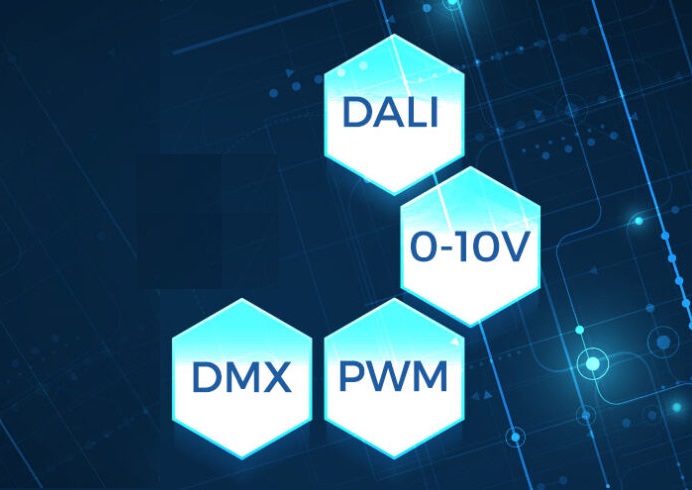In the rapidly evolving world of lighting, the days of simple on/off switches are long gone. Modern lighting systems are sophisticated networks, capable of precise dimming, color changing, scheduling, and integration with broader building management systems. This advanced functionality is made possible by lighting control protocols – the digital languages that allow different lighting fixtures, sensors, and control systems to communicate with each other.
Understanding these protocols is crucial for anyone involved in lighting design, installation, or facility management. Each protocol has its unique strengths and applications, and the right choice depends entirely on the specific needs of the project – whether it’s a dynamic theatrical lighting setup, an energy-efficient office lighting solution, or a seamless smart home integration. By implementing the correct protocol, users can achieve greater energy efficiency, unparalleled convenience, and enhanced control over their lighting environments.
Key Lighting Control Protocols Explained:
Navigating the landscape of lighting control protocols can seem complex, but focusing on the most common ones helps clarify their uses:
- DALI (Digital Addressable Lighting Interface)
- What it is: DALI is a widely adopted international standard specifically designed for digital control of lighting. It allows individual luminaires to be addressed and controlled, offering granular management over each light fixture.
- Strengths:
- Individual Addressing: Each DALI-compatible fixture can be controlled independently.
- Bidirectional Communication: DALI devices can send information back to the control system (e.g., fault detection, lamp failure).
- Scalability: Ideal for larger commercial lighting projects where precise control and monitoring are essential.
- Ease of Commissioning: Simplifies wiring and commissioning compared to traditional analog systems.
- Best for: Office lighting, retail spaces, public buildings, and large-scale commercial lighting installations where flexibility and detailed monitoring are key.
- KNX (Konnex)
- What it is: KNX is an open standard for building automation, not just lighting. It’s a comprehensive system that can integrate lighting control with other building functions like HVAC, security, blinds, and more.
- Strengths:
- Holistic Building Integration: Seamlessly connects lighting with other building automation systems for centralized control.
- High Reliability: A robust and decentralized system, meaning no single point of failure.
- Future-Proof: An open standard supported by many manufacturers, ensuring compatibility and long-term viability.
- Best for: Smart home integration, large commercial buildings, hotels, and projects requiring complete building-wide automation and control.
- DMX (Digital Multiplex)
- What it is: DMX is primarily used for theatrical lighting and entertainment applications. It’s designed for rapid and precise control of a large number of dynamic lighting fixtures, often with color-changing or movement capabilities.
- Strengths:
- Speed and Responsiveness: Ideal for complex scenes and fast-paced lighting effects.
- Vast Device Control: Can control hundreds of fixtures from a single controller.
- Robust for Live Events: Built for the demands of performances and shows.
- Best for: Theatrical lighting, concerts, nightclubs, architectural accent lighting with dynamic effects, and specialized entertainment lighting.
- 0-10V
- What it is: 0-10V is one of the oldest and simplest lighting control protocols, using a low voltage DC signal (0-10 volts) to control the brightness of a light fixture.
- Strengths:
- Simplicity and Cost-Effectiveness: Relatively straightforward to implement and less expensive than digital protocols.
- Widespread Compatibility: Many LED drivers and light fixtures are natively compatible with 0-10V dimming.
- Reliability: A tried-and-true analog system.
- Best for: Basic dimming applications in office lighting, retail, and commercial lighting where simple brightness adjustment is sufficient without individual fixture addressing.
Choosing the Right Protocol
The decision of which lighting control protocol to use is pivotal. It directly impacts the functionality, scalability, and long-term performance of your lighting system. Considerations include:
- Project Scope: Is it a single room or an entire building?
- Required Functionality: Do you need simple dimming, individual fixture control, color changing, or integration with other building systems?
- Budget: Cost implications vary significantly between protocols.
- Future Expansion: How easily can the system be expanded or adapted later?
By understanding the unique advantages of DALI, KNX, DMX, and 0-10V, you can make an informed decision to create lighting environments that are not only aesthetically pleasing but also highly efficient, adaptable, and a pleasure to control. Contact us to explore how the right lighting control protocol can transform your space.





